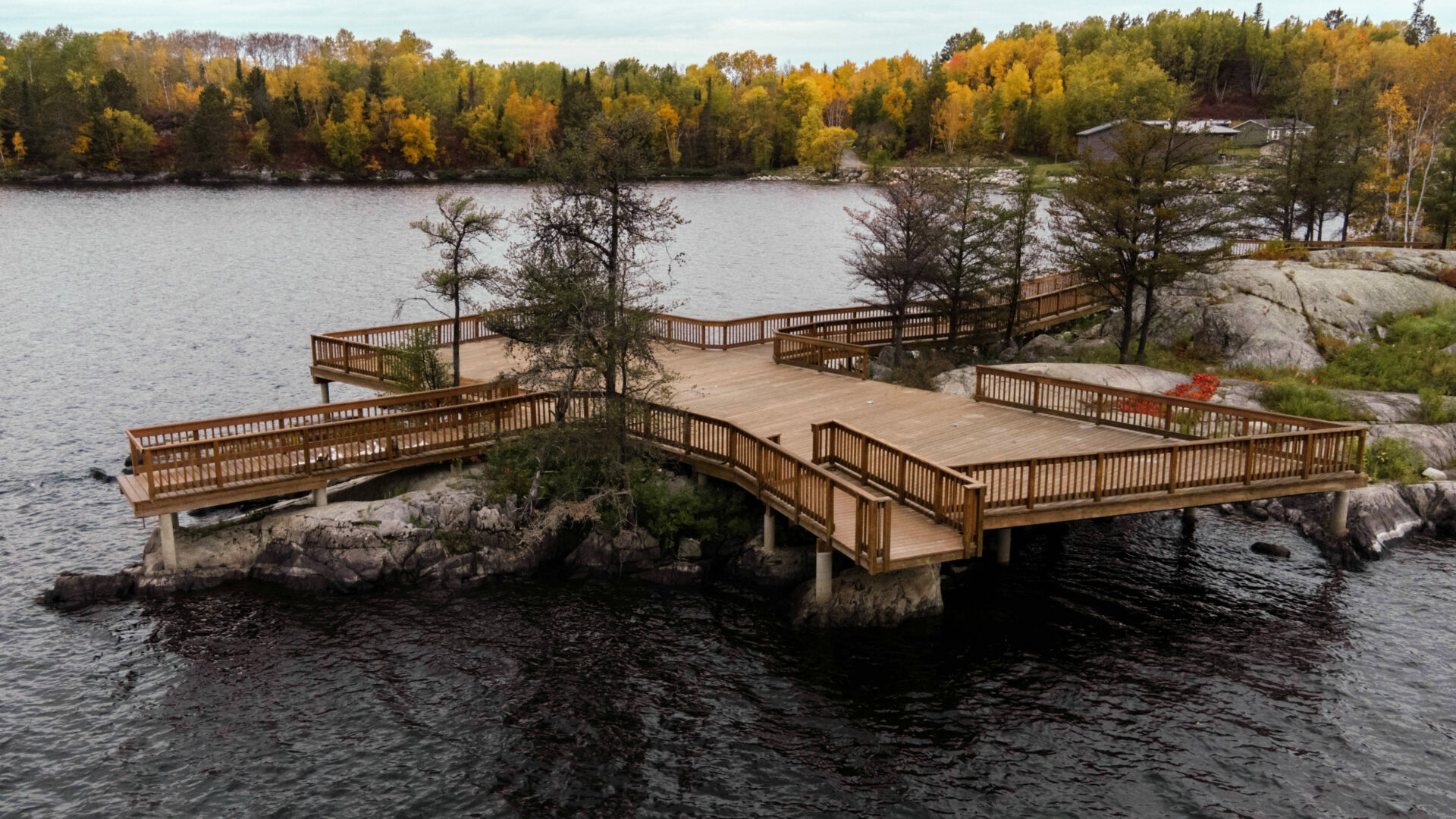April 21, 2023

Written By
Kalynn Helmer, Marketing Coordinator with members of our Landscape Architecture and Urban Design Team
Earth Day is tomorrow, April 22, so what better time to take a peek at some ways we work with the environment in our field, specifically through our landscape architecture team.
Environmental check boxes are taking the industry by storm and clients want to be sure they are seen as having green initiatives on their projects. While we think about environmentalism at every step of a project, one of the ways that Architecture49 stands out, is having landscape architects and technicians who help our teams right from the pre-design stage. Designing with environmental mitigation in mind does great things for offsetting heating and cooling, lowering operational costs and improving the quality of life for the end-users. As one of our Intern Landscape Architects said, “It’s about us living with the earth”.
This also means considering what types of trees, shrubs, and greenery to incorporate into the landscape. And no, we all know that landscape architecture isn’t just about the pretty gardens but is certainly plays a role. In both the end visual result and the longevity of design. This is why native species are so important. “They have low maintenance costs and create habitat for birds and insects,” Landscape Designer Magan Kaur said. Environmentalism doesn’t have to be complicated.
“Indigenous culture is all about celebrating nature and all its elements, hence they are some of the greatest landscape design projects. Traditional knowledge and heritage can contribute to sustainable ecosystem management. For example, the sustainable production and consumption of indigenous and traditional food has invaluable benefits for natural resources and ecosystems.” Magan Kaur, Landscape Designer

“Minimizing the use of pesticides and chemical fertilizers, and replacing them with organic compost and other organic alternatives should be considered. One can use water wisely. Use drip irrigation and other efficient irrigation systems to help reduce water consumption and prevent runoff,” are all ways to make a project more environmentally friendly.
As consultants, we can help our clients achieve the meaningful environmentalism that lasts without jumping on catchy green trends that won’t make the cut years down the road. We can educate through the design process to help clients reassess what good landscape looks like. Meaning its not always, “sod, plus shrub, plus singular tree,” said Stef.
Some of the most exciting pieces to landscape design, and design in general, is the incorporation and acceptance of Indigenous Design Practices. There is extensive overlap between Indigenous Design Practices and environmentalism. This means that our teams are uniquely positioned to act as stewards and strong voices in the industry to further incorporate such practices into the field and help other listen to the wisdom of our Country’s knowledge keepers. “Indigenous culture is all about celebrating nature and all its elements, hence they are some of the greatest landscape design projects,” said Magan. “Traditional knowledge and heritage can contribute to sustainable ecosystem management. For example, the sustainable production and consumption of indigenous and traditional food has invaluable benefits for natural resources and ecosystems.”
So, this month and particularly on Earth Day, we challenge you to explore even more ways that we can work with the earth and incorporate environmentalism into designs. Because it’s not just landscape - Environmentalism is intrinsic to our profession. If there is not uptick by other aspects of the built environment, then it’s akin to painting over a cracked foundation.
As for our landscape work, Magan notes exciting ideas in that “landscape architects can play a key role in advocating for policy changes that support environmental protection, such as promoting the use of renewable energy or protecting green spaces from development.”
Put simply though, the future is an exciting prospect.
